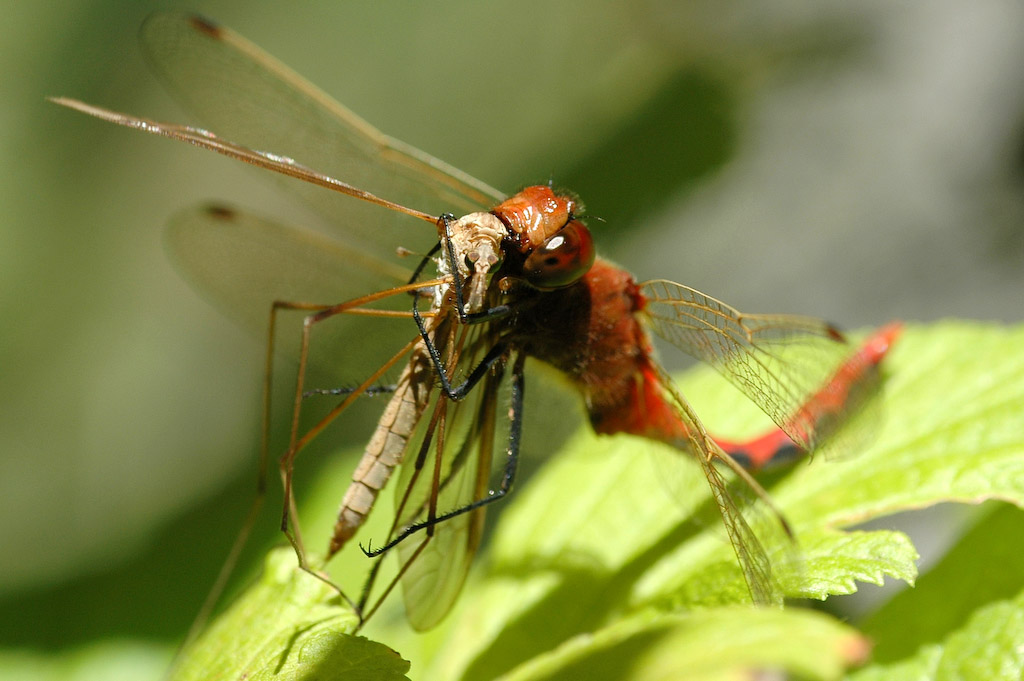Dragonflies are fascinating creatures that have captivated the curiosity of many nature enthusiasts. These incredible insects are known for their vibrant colors and agile flight, but what lies beneath their enchanting appearance is a complex and predatory lifestyle. Understanding what do dragonflies eat not only unveils their role in the ecosystem but also highlights their importance in maintaining a balanced environment. As apex predators in both their larval and adult stages, dragonflies play a crucial role in controlling pest populations. Their diet primarily consists of other insects, making them a natural form of pest control. But how do their feeding habits change throughout their life cycle? This article will explore the dietary preferences of dragonflies and provide insights into their predatory behaviors.
When it comes to what do dragonflies eat, their menu is quite varied. Adult dragonflies are known to consume a wide array of flying insects, including mosquitoes, flies, and even other dragonflies. Their impressive hunting skills allow them to capture prey mid-air, showcasing their agility and precision. Meanwhile, the larvae, often referred to as nymphs, have a different diet that includes aquatic insects and small fish. This article will delve into the specific dietary needs of both adult and larval dragonflies, providing a comprehensive overview of their feeding habits.
As we explore the question of what do dragonflies eat, we will also examine the ecological implications of their diet. Understanding their role as predators can help us appreciate the delicate balance of ecosystems in which they thrive. From their hunting strategies to their dietary preferences, dragonflies are more than just beautiful insects; they are vital contributors to the health of our environment.
What Do Adult Dragonflies Eat?
Adult dragonflies have a voracious appetite and are known to be skilled hunters. Their diet predominantly consists of flying insects, which include:
- Mosquitoes
- Flies
- Bees
- Butterflies
- Other dragonflies
These insects are all part of a dragonfly's natural habitat, and their hunting techniques are fascinating to observe. With their large compound eyes, dragonflies can spot prey from a distance, allowing them to swoop in for the kill with remarkable accuracy.
How Do Dragonflies Hunt for Food?
The hunting technique of dragonflies is a combination of stealth and speed. They employ various strategies to capture their prey, including:
- Patrolling: Dragonflies often patrol a specific territory, flying back and forth to spot potential meals.
- Ambush: Some species lie in wait, camouflaged among vegetation, before launching a surprise attack on unsuspecting insects.
- Group Hunting: In certain cases, dragonflies may hunt in groups, increasing their chances of catching larger prey.
This combination of strategies makes adult dragonflies formidable predators, capable of taking down various flying insects with ease.
What Do Dragonfly Nymphs Eat?
While adult dragonflies are known for their aerial hunting skills, their larval stage, known as nymphs, has a different diet. Nymphs are aquatic and primarily feed on:
- Aquatic insect larvae
- Small fish
- Amphibians
- Other small aquatic creatures
These nymphs are also skilled hunters, utilizing their extendable jaws to capture prey in the water. They play a crucial role in maintaining the balance of aquatic ecosystems by controlling populations of smaller organisms.
Why Are Dragonflies Important for Ecosystems?
Understanding what do dragonflies eat is essential for appreciating their ecological significance. As predators, they serve several important functions in their habitats:
- Pest Control: By feeding on mosquitoes and other pests, dragonflies help keep insect populations in check.
- Food Source: Dragonflies also serve as a food source for birds and other wildlife, playing a role in the food chain.
- Indicator Species: The presence of dragonflies can indicate the health of an ecosystem, as they require clean water to thrive.
In this way, dragonflies contribute to the overall health and balance of their environments.
What Threats Do Dragonflies Face?
Despite their importance, dragonflies face several threats that can impact their populations. These include:
- Habitat destruction due to urbanization and agriculture
- Pollution of water bodies
- Climate change affecting their breeding grounds
Conservation efforts are crucial to ensure the survival of dragonflies and the ecosystems they inhabit.
How Can We Help Protect Dragonflies?
There are several steps individuals can take to help protect dragonflies and their habitats:
- Create Dragonfly-Friendly Gardens: Plant native plants and create water features to attract dragonflies.
- Avoid Pesticides: Reducing the use of chemicals in gardens can help protect insect populations.
- Support Conservation Efforts: Get involved with local organizations that focus on habitat preservation.
By taking these actions, we can contribute to the well-being of dragonfly populations and the ecosystems they support.
Conclusion: What Do Dragonflies Eat and Why It Matters
In conclusion, understanding what do dragonflies eat provides valuable insights into their role as predators and their significance in maintaining ecological balance. From their remarkable hunting skills as adults to their predatory habits as nymphs, dragonflies are essential components of both terrestrial and aquatic environments. By recognizing the threats they face and taking steps to protect them, we can ensure that these incredible insects continue to thrive for generations to come.
You Might Also Like
Unraveling The Mystery: Manute Bol Cause Of DeathDiscovering The Fascinating World Of Emperor Penguins Jump
Discovering The Depths Of Zenless Zone Zero Gameplay
Cozy Up With Target Christmas Pajamas: The Ultimate Holiday Tradition
Ultimate Guide: How Do You Give People Robux?
Article Recommendations
- Barry Keoghan Eyes
- Patrick Christys Wife
- Kristin Bell Hot
- Jade Castrinos And Alex Ebert
- Who Is Bobby Lyons
- Gakirah Barnes Crime Scene
- Richard Warwick
- Jake Gyllenhaal Height Weight
- Does Maria Bartiromo Have Cancer
- Justin Bieber Die


